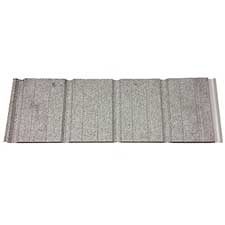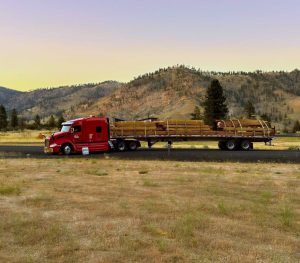Attic Ventilation With Trusscore Wall and Ceiling Panels
Reader STACY in NEW BERG wrties:
“Hi, I have a pole building 28’x48′ 16′ high eave height. It’s used as a shop and RV storage. I’m insulating it and planning on heating it with a pellet stove. I’ve read your posts in many instances about (NOT) using a vapor barrier in the ceiling. Ok, that’s great, less work. However, I’m planning on using a fairly new product by Trusscore, wall and ceiling panels. These are a PVC material and can possibly be viewed as a vapor barrier itself, they lock-in tight to each other. The shop roof is 1/2″ Plywood and Tiger paw vapor barrier under 26 gauge Standing seam metal roof. I have a Gable vent powered with an Attic fan programmable by temp and/or humidity. I guess my question is, since I should not be putting up a vapor barrier, and given this material I’m using for the ceiling, should I be adding any venting through the ceiling to allow warm moist air from the shop to pass through the attic space? Seems like that would be wasting heat but, the moisture needs to go somewhere, right? Thanks much.”
Trusscore came about in 2020, as an alternative to painted drywall. It is a ½” thick panel with an unique internal truss design combined with high-strength polymer formulation.
Polyvinyl chloride (PVC) is an exceptionally durable material. It has a service life of up to 100 years and can stand up to wear and tear coming with interior wall and ceiling panels in residential, commercial, and agricultural applications.
Scratch, dent, and damage resistance properties make Trusscore Wall and Ceiling Board a great drywall alternative.
Combining PVC material and an internal truss design, you have durable, impact-resistant wall and ceiling panels able to stand up to contact without showing dents, cracks, or damage.
Trusscore products can handle nearly anything being thrown at them. From high-traffic residential spaces, commercial kitchens, to barns and workshops. I will guess you are also insulating at ceiling level, directly above your PVC Panels. You are creating a building “drying to inside” meaning it will be necessary to mechanically dehumidify (reach out to a qualified HVAC provider), otherwise you will have serious condensation problems. I am also concerned about your attic ventilation – as unconditioned dead attic spaces require both air intake and exhausts, in correct proportion. Not following these requirements will likely result in premature degradation of your roof system, or at least mold issues. You can read more on ventilation requirements here: https://www.hansenpolebuildings.com/2023/06/274512/
*For those of you who are wondering, Trusscore is not necessarily for those who are faint of pocketbook. Expect to pay somewhere around four dollars per square foot for panels only – roughly 10 times cost of gypsum wallboard (sheetrock).








